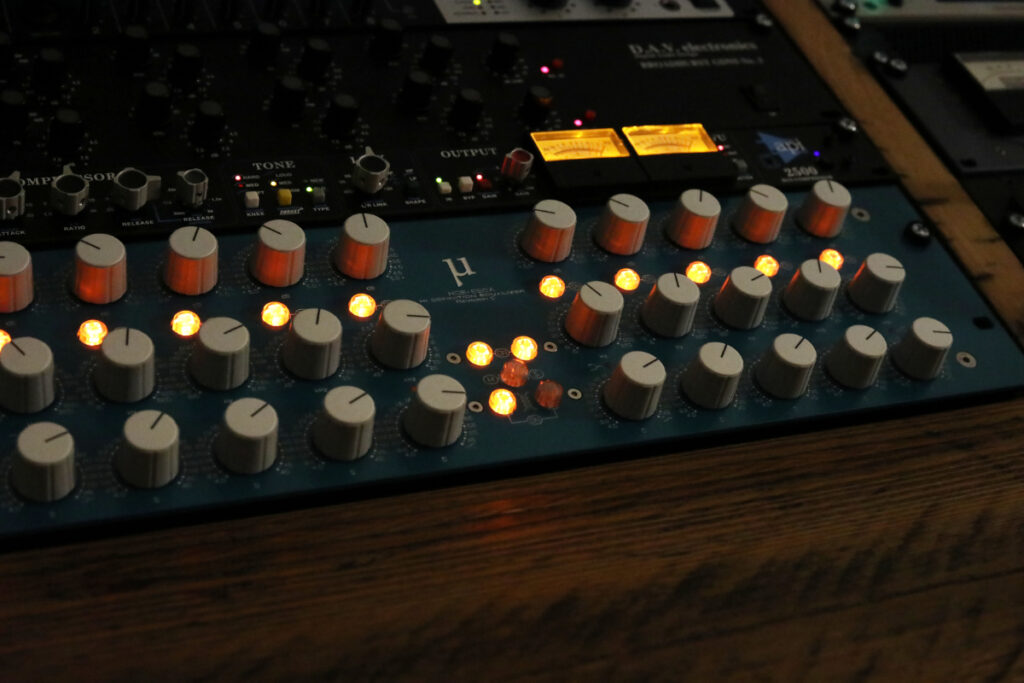There’s a lot of noise around whether or not you should dither when bouncing down to 24 bit. But the answer is simple – yes you should.
Without going into the actual mathematics of it (partially because you’ll be hard pressed to find someone who really understands) here’s why.
Word length reduction
When we describe a file as 24 bit or 16 bit, we’re talking about the word length. This literally describes the number of decimal places allowed to mathematically describe an event.
What is common knowledge (in the digital audio community) is that when you reduce the word length i.e. convert 24 bit to 16 bit – you should dither. Why? Because dither helps to better make the transition from a longer word length to a shorter word length. If you don’t dither, your DAW will just indiscriminately chuck out the last 8 bits of data. With it, your DAW will still do that, but a bit more artfully.
Quantization distortion
The reason dither is important is quantization distortion. To put it simply, when chucking out the last 8 bits, your DAW doesn’t know what to do with the last bit – the one that describes the quietest section – and this causes quantization distortion as a result of rounding errors. A gritty, horrible sounding distortion that can affect things much higher up in the dynamic range. It can cause a blurring of the stereo image, phase shifts, lack of detail, lack of warmth – despite occurring at the quietest end of the range, below most people’s hearing, the symptoms are dramatic.
Dither randomises the last bit, creating white noise along the lines of tape hiss. This is far more pleasant to our ears, smooths out the bottom end and prevents all the symptoms listed above.
OK, so you’ve been working in 24 bit all along, and you’re bouncing your mix out at 24 bit to send to a mastering engineer – who will dither when it comes to rendering the 16 bit file – you don’t need to dither right? Wrong.
32-bit float
Probably every DAW at this point works internally at 32 bit float. That means that although your individual track files and project are set to 24 bit, every process that is being undertaken by Cubase/Pro Tools/Logic etc. is happening at 32 bit float. Even a single fader move will mean the DAW is working at 32 bit float.
And that means when you bounce your mix to 24 bit, word length reduction is taking place.
And what do you do when you reduce the word length?
Dither.
It’s important to note however, that this is not the time for your fancy noise shaping dither. That’s definitely down to the mastering engineer. This is just for your garden variety ‘flat’ or triangular dither (commonly described as TPDF).
And word to the wise – your DAW may not automatically dither when you bounce. In order to dither correctly you need to insert a dithering plug-in into the last insert of your master fader (so it’s the last thing to touch your audio).
Hear for yourself
I was recently explaining this to a mixing engineer friend of mine. He was sceptical, having learnt (as most of us did) that dithering to 24 bit was unnecessary, and possibly even harmful. So I suggested a blind test. He sent me the same 24 bit mix – one with a flat dither and one without – labelled A and B.
It didn’t take long to pick out which had been dithered. The dithered mix was more focused, more solid and revealed more detail. He went back and re-bounced all the mixes for the EP for mastering.
Try it for yourself, you might be surprised.


